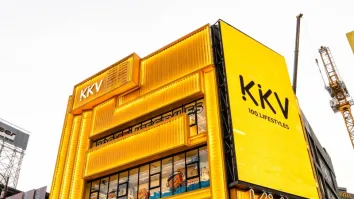Why technology adoption is critical in the age of omni-channel retail

The retail sector has reached a tipping point in Singapore and other major economies around the world.
Prompted by evolutions in technology, conventional retail habits have undergone drastic changes. Consumers are now gravitating towards online shopping while eschewing retail stores, leading to a steady decline in retail sales and low tenancy rates. The issue is exacerbated by the rise of the millennials, representing one of the largest generations in history and anticipated to play a central role in the ebb and flow of retail in the years ahead. According to management consulting and professional services firm Accenture, they will have more spending power than previous generations, with millennials in Asia expected to collectively possess an estimated US$6 trillion in disposable income by 2020.
However, research from management consulting firm Bain & Co suggests that millennials possess vastly different preferences from their generational counterparts, leaving even the trendiest of brands dumbfounded at what drives their purchase decisions.
There is no question that the retail industry is experiencing a sea change, with the North American retail scene described by investment banking company Piper Jaffray as under going a “historic moment of truth”.
With the entry of e-commerce giant Amazon into Singapore, has the death knell sounded for retailers in the island nation?
The end of bricks-and-mortar retail in Singapore?
Not quite, it seems.
While e-commerce has indeed been a huge disruptor for retail, it would be incorrect to say that it is solely responsible for the shifting fortunes of bricks-and-mortar retailers.
Evidence is pointing to a phenomenon termed ‘digital-first retail’ which posits that there is an increasing tendency for consumers’ purchase decisions to be influenced by digital channels. Studies by market researchers Forrester and Deloitte have estimated digital-driven bricks-and-mortar sales to outpace online sales by a staggering five-fold margin.
With a tech-savvy millennial audience, digital is increasingly the gateway to retail sales. The digital-first retail effect was perhaps behind the rise in sales in the Great Singapore Sale, which had leveraged a mobile app to drive traffic to stores, while retailers simultaneously offered online catalogues to woo shoppers.
Far from competing for market share, it is clear that digital channels could serve to boost in-store sales instead.
According to Bloomberg, the Singapore retail scene is a tough nut to crack as most of the population are in close proximity to shopping malls. For this reason, Singapore trails behind most developed economies in e-commerce growth rates.
Bloomberg also found that Singaporean consumers preferred shopping in physical stores due to the in-store experience provided — an element that digital channels cannot replicate.
Technology as a shot in the arm for retail
So how can retailers adapt to this paradigm shift?
The ‘digital-first’ phenomenon suggests that an omni-channel approach might be the inflection point for businesses. It is thus crucial for retailers to develop an open mindset towards the adoption of new technologies that will enable them to seamlessly and successfully integrate online and physical retail.
As retail pivots towards an omni-channel model, retailers also have to look towards technology to effectively engage in-store customers.
Frontier technologies, such as virtual reality (VR), are one of the most potent tools at retailers’ disposal — allowing for the concoction of unique retail experiences that may just be the secret sauce to inject much needed vigour into bricks-and-mortar retail.
A prominent example is outdoor apparel company The North Face deploying VR to digitally whisk its customers away to California’s Yosemite National Park.
A national effort supported by the Singapore government is under way, undergirded by the establishment of the Retail Centre of Excellence — a knowledge ecosystem that sees retail experts coming together to generate ideas on boosting retail and integrating the online and physical retail spaces.
This is in line with iFashion Group’s vision of spurring the retail scene through collaboration, coexistence and resource-sharing.
Future of retail lies in omni-channel
Future of retail lies in omni-channel and experiential engagement

Consumers are gravitating towards online shopping while eschewing retail stores, leading to a steady decline in retail sales and low tenancy rates.
Businesses are coming to the realisation that e-commerce does not mean the death of bricks-and-mortar retail but play a complementary role to engage a wider consumer demographic, leading to increased sales performance
Even established e-commerce players such as Amazon and Alibaba are moving towards physical store fronts — unthinkable a mere couple of years ago.
With an industry-wide shift towards omni-channel retailing, businesses need to invest in the creation of effective, unique retail experiences that increase social currency and gives them an edge over the competition.
As buzzwords such as augmented reality and artificial intelligence are bandied about in a future retail scene with millennials as the core audience, it is more imperative than ever that retailers remain open to change, keeping abreast of evolutions in technology and consumer preferences to avoid being disrupted.



















 Advertise
Advertise





